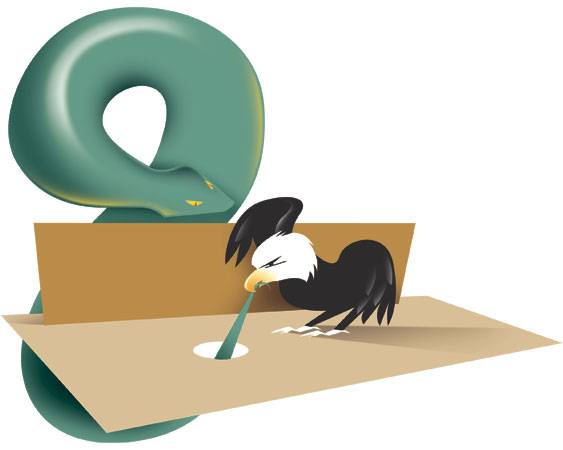Wednesday, July 27, 2011 | 2 a.m.
Las Vegas Sun archives
The recent record methamphetamine bust in Southern Nevada is the latest reminder of just how far Mexican drug cartels have come in filling the void left by a sharp decline in U.S. meth lab activity out West.
Law enforcement authorities credit a federal law, which took effect in 2006, with making it tougher for American drug traffickers to obtain ephedrine and pseudoephedrine, chemicals found in cold medicines used to manufacture meth.
But Mexican cartels such as Sinaloa, Zetas and La Familia, which also deal in heroin, marijuana and cocaine, have found creative ways to obtain those drug precursors from China, India and other faraway places, and have established large manufacturing operations south of the border to replace U.S. meth labs. The cartels then use an array of methods to smuggle the drugs into the U.S., such as trucks, gliders, tunnels and catapults.
That’s why authorities weren’t shocked to uncover 208 pounds of meth and 4.3 pounds of heroin with an estimated street value of more than $5.7 million after executing five search warrants throughout the valley July 12 and 13. The raids were conducted by a coalition that included the Drug Enforcement Administration, Metro, Henderson, North Las Vegas and Boulder City police, and the Nevada Highway Patrol. They resulted in the arrests of 10 illegal immigrants from Mexico and a juvenile.
“We can say this arrest is directly tied to Mexican drug trafficking organizations,” Metro spokesman Officer Bill Cassell said. “The majority of meth that’s available in the U.S. is directly related to meth production in Mexico. They have even figured out a way to produce crystal meth without the use of ephedrine. Some of the stuff they’re using, like N-acetyl and methylamine, isn’t regulated in Mexico.”
The meth haul equates to 94.3 kilograms, considerably more than was seized statewide in each of the past six years. The amount seized in Nevada dropped from 72.4 kilograms in 2006 to 36.9 kilograms in 2009, but rose to 73.4 kilograms last year. The latest drug bust is consistent with what law enforcement authorities say is the increasing role played by the Mexican cartels.
“There have been significant gains with the removal of major command and control (operatives) within the cartels,” DEA Special Agent Chris Jakim said from Washington. “But the voids get filled and the supply of drugs is steady.”
U.S. law enforcement authorities counted on the federal Combat Methamphetamine Epidemic Act to help take meth off the streets. The law requires consumers to register with pharmacies when purchasing large quantities of medicine over the counter that contains ephedrine or pseudoephedrine and also restricts the quantity purchased to nine grams every 30 days.
Evidence that the law is working in Nevada can be found in the following trend: Authorities closed down 83 meth labs statewide in 2004 but only eight last year. And police say those labs produced mostly small quantities.
But the latest bust shows that the law hasn’t discouraged the cartels.
“When you look at the size of this seizure, you wonder how many times they had done this before to get to that comfort level,” Jakim said. “Obviously they got comfortable enough to smuggle 208 pounds. They were confident they wouldn’t get detected.”
Information sharing among U.S. and Mexican law enforcement agencies is stronger than ever, Jakim said. But a Justice Department assessment of the national drug threat last year concluded: “Despite recent government of Mexico efforts to prohibit the importation of methamphetamine precursor chemicals, methamphetamine availability increased as the result of higher production in Mexico using alternative, less-efficient precursors.”
The cartels have gained better cooperation with U.S.-based street and prison gangs to distribute drugs. And the traffickers have found more ways to move drugs into this country. U.S. Customs and Border Protection agents found 26 tunnels along the border in 2009, 10 more than the previous year.
In another sign of increased cartel activity, border agents confiscated 3,478 kilograms of meth in 2009, nearly double what was seized in 2007.
Interstate 15 through Las Vegas is considered by the Justice Department to be part of a regional transportation corridor that connects meth produced in Mexico and California with eastbound Interstates 70 and 80. This corridor, which cuts through the central U.S., accounted for 46 percent of the nation’s meth confiscations along interstates from 2008 through October 2009.
National Meth Center spokesman Chris Fruitrich in Tacoma, Wash., said he isn’t surprised that cartels stepped in to fill the void when meth lab production declined in the West because “there’s a lot of money to be had.”
“As long as there is a demand, they will continue to fill it,” he said.


Join the Discussion:
Check this out for a full explanation of our conversion to the LiveFyre commenting system and instructions on how to sign up for an account.
Full comments policy